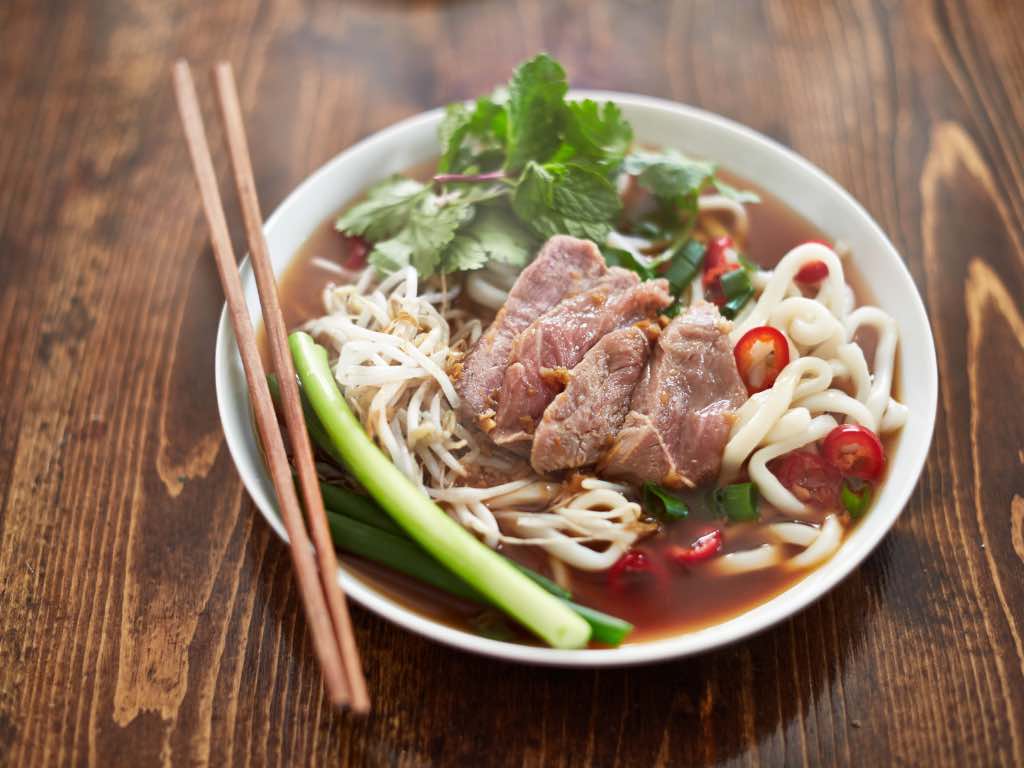
Exploring the Rich Flavors of Halal Pho: A Culinary Fusion
|
|
Time to read 5 min
Welcome to One Stop Halal!
Written by: Najma A.
|
|
Time to read 5 min
Vietnamese cuisine is renowned for its flavorful and aromatic dishes, with pho being a staple that has gained international acclaim. Traditionally made with beef, the dish has evolved to accommodate various dietary preferences and restrictions. A unique and delicious variation has emerged in recent years – Halal Pho. This culinary fusion caters to the Muslim community's dietary requirements and introduces a delightful twist to the classic Vietnamese dish.
Before delving into the world of Halal Pho, it's crucial to understand the roots of this beloved halal Vietnamese food. Pho originated in the early 20th century in Northern Vietnam. The dish typically consists of a flavorful broth made by simmering bones, aromatic spices, and herbs for an extended period. Thin rice noodles and thinly sliced beef or chicken are added to the piping hot broth just before serving. Garnishes such as bean sprouts, lime, basil, and chilies complete the dish, providing a symphony of flavors and textures.
One of the beauties of Halal Pho lies in its adaptability. Chefs and home cooks have embraced the challenge of crafting unique variations that cater to diverse tastes while maintaining the essence of traditional pho. Here are a few noteworthy Halal Pho variations that have gained popularity:
This variation replaces traditional meat with halal seafood such as shrimp, fish, and calamari. The result is a lighter yet equally flavorful broth that appeals to seafood lovers.
For those who prefer a plant-based diet, vegetarian Halal Pho is an excellent choice. Tofu, mushrooms, and other plant-based proteins create a hearty and satisfying alternative to the traditional meat-based pho.
Adding a touch of Middle Eastern influence, some chefs opt for halal lamb or goat as the protein in their pho. These meats' rich and slightly gamey flavor adds a distinctive twist to the dish.
For those who enjoy a bit of heat, spicy Halal Pho incorporates additional chili peppers and spices into the broth, creating a warming and refreshing version of the classic dish.
Creating an authentic bowl of Halal Pho involves mastering a set of culinary techniques to capture the essence of the traditional Vietnamese dish. Some key methods include:
The heart of any pho is its broth. Achieving a rich and flavorful broth involves slow and meticulous simmering of halal bones, spices, and aromatics. This process allows the flavors to meld and infuse into the liquid, creating a robust base for the soup.
The type and preparation of rice noodles are crucial in achieving the right texture in Halal Pho. Rice noodles are typically soaked and added to the hot broth just before serving, ensuring they are perfectly cooked.
The garnishes in Halal Pho are as important as the broth and protein. Fresh herbs like basil and cilantro, bean sprouts, lime wedges, and thinly sliced chili peppers are arranged on a plate, allowing diners to customize their bowls according to their preferences.
Choosing high-quality halal meat, whether beef, chicken, lamb, or seafood, is essential for a successful bowl of Halal Pho. The meat should be thinly sliced and added to the hot broth before serving, ensuring it cooks perfectly in the steaming liquid.
In conclusion, the challenges associated with Halal Pho underscore the need for education and awareness in the culinary world. Overcoming these obstacles ensures the authenticity of Halal Pho. It paves the way for a more inclusive and culturally rich dining landscape, where traditional recipes can transcend cultural boundaries and become a shared culinary heritage.
Welcome to Butcher Shop that is 1-clik away. We carry various meat cuts that are hard to find elsewhere. We deliver to your doorstep anywhere in the United States within 1-2 business days.
Halal Pho stands as a testament to the evolving nature of global cuisine. It seamlessly blends the rich traditions of Vietnamese pho with the dietary preferences of the Muslim community, resulting in a delightful and inclusive culinary experience. As chefs continue to explore creative variations and adapt traditional recipes to meet diverse needs, the world of Halal Pho will surely expand, captivating the taste buds of an ever-growing audience. So, whether you're a pho enthusiast or someone eager to explore the world of diverse and inclusive flavors, Halal Pho is a culinary journey worth embarking upon.

© 2025 One Stop Halal, Inc.